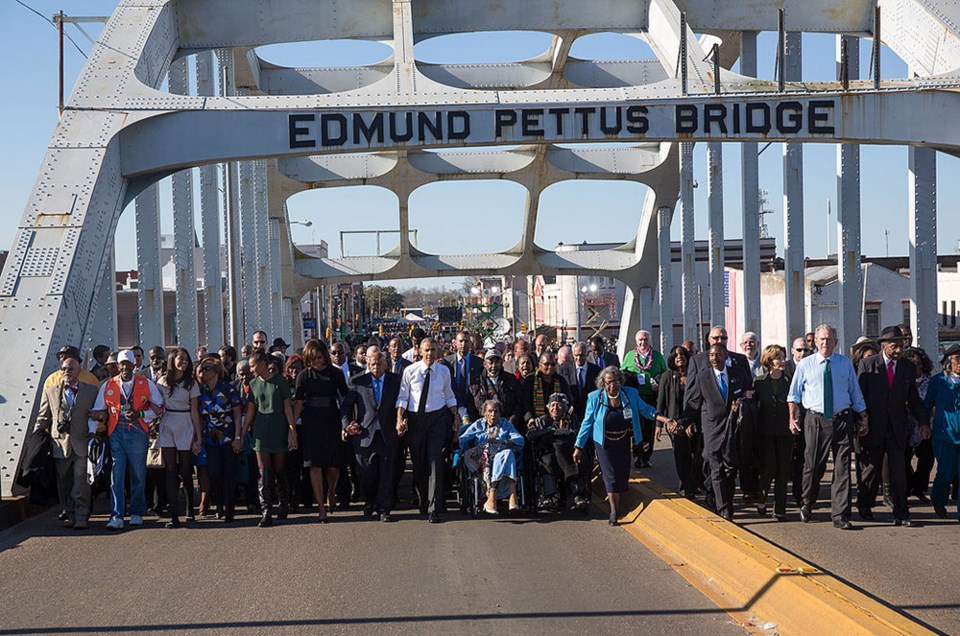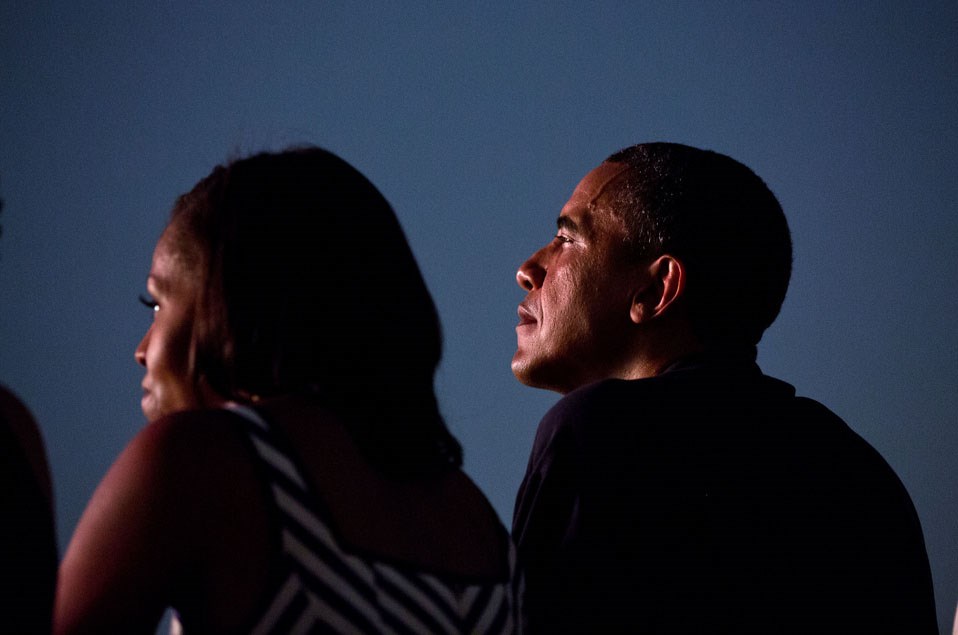What did it feel to be the first black First Lady of the United States?
Michelle Obama says she didn’t think of it that way.
“It didn’t feel like anything because this is who I am,” she said, gesturing towards herself as she sat on the stage at the Queen Elizabeth Theatre in Vancouver on Thursday afternoon.
“It’s who I am. I’m a black woman.”
She stressed that it was important to always remember that the American people twice elected a black president, her husband Barack Obama. That is a sign of the tremendous advances that have been made since they were young people on the outside of the White House gates looking in.
But it wasn’t easy in a world where racism still exists.
“History is a bumpy road,” she said at the first of two events organized by the Greater Vancouver Board of Trade on Feb. 15. “There aren’t straight shots to excellence. We’re still fighting stereotypes. I felt the sting, I felt the judgement.”
People talked negatively about such things as how she looked and her body shape. “That was no fun. I took some of the hits because I was the first.”
One thing she always knew, though, is that she stood “on the shoulders of people who went through so much worse. That’s the energy you draw on. People better and braver than me withstood more.”

She described walking across the Edmund Pettus Bridge in Selma, Alabama with Congressman John Lewis on the 50th anniversary of the civil rights movement’s “Bloody Sunday.” When Lewis and other leaders of the non-violence movement crossed that bridge on March 7, 1965 as part their quest to extend voting rights to Afro-Americans, state troopers with batons were waiting on the other side. Lewis was one of those beaten for simply crossing the county line.
“There’s nothing I experienced that equals any of the challenges these people felt,” she said.
“Skin colour is the least distinguishing thing about us,” she said, earning the applause of the sold-out audience. “It’s like the colour of our hair, the colour of our eyes.”
Emphasizing the importance of mentorship, one of the constant themes of her hour-long talk, she noted that for eight years, children were born and grew up knowing only a black president. “Overall, it felt like a good thing,” she said with a smile.
A lot of people’s feelings of a divided country come from social media, she said, adding that she still finds the world to be a place of “inspiration and beacons of hope.”
“It’s not as bad as it feels,” she said. In the eight years she and Barack travelled throughout the United States, they were welcomed by blacks and whites, rich and poor.
“There’s a difference between divisiveness in politics and divisiveness in our culture,” she said, adding that social media magnifies those divides but it’s important to remember what draws people together.
She described standing on the balcony of the West Wing, watching the Fourth of July fireworks with her family and the thousands of people crowed into the public spaces surrounding the White House. Her daughter Malia remarked, “It’s amazing that this many people can gather, peacefully.”
But those peaceful gatherings happen every day, Michelle Obama said. People aren’t always fighting or being mean to one another.
“We just have to remember the truth of who we are,” she said, stressing the need to not surround ourselves with only those who are just like us.
“A life looking into a phone is not a life,” she added. “You need to break out of your siloes and be with people — with voices, with connections, with eye contact….
“Policies can be divisive but humanity is pretty amazing.”
You can lead by fear and focusing on the bad but that won’t outnumber all the good things that are happening, she said.
“If you lead from hope you see the good. It’s just the lens you choose to look through…
“Don’t despair, don’t get bogged down,” she said. “It takes time but we’re moving in the right direction.”



